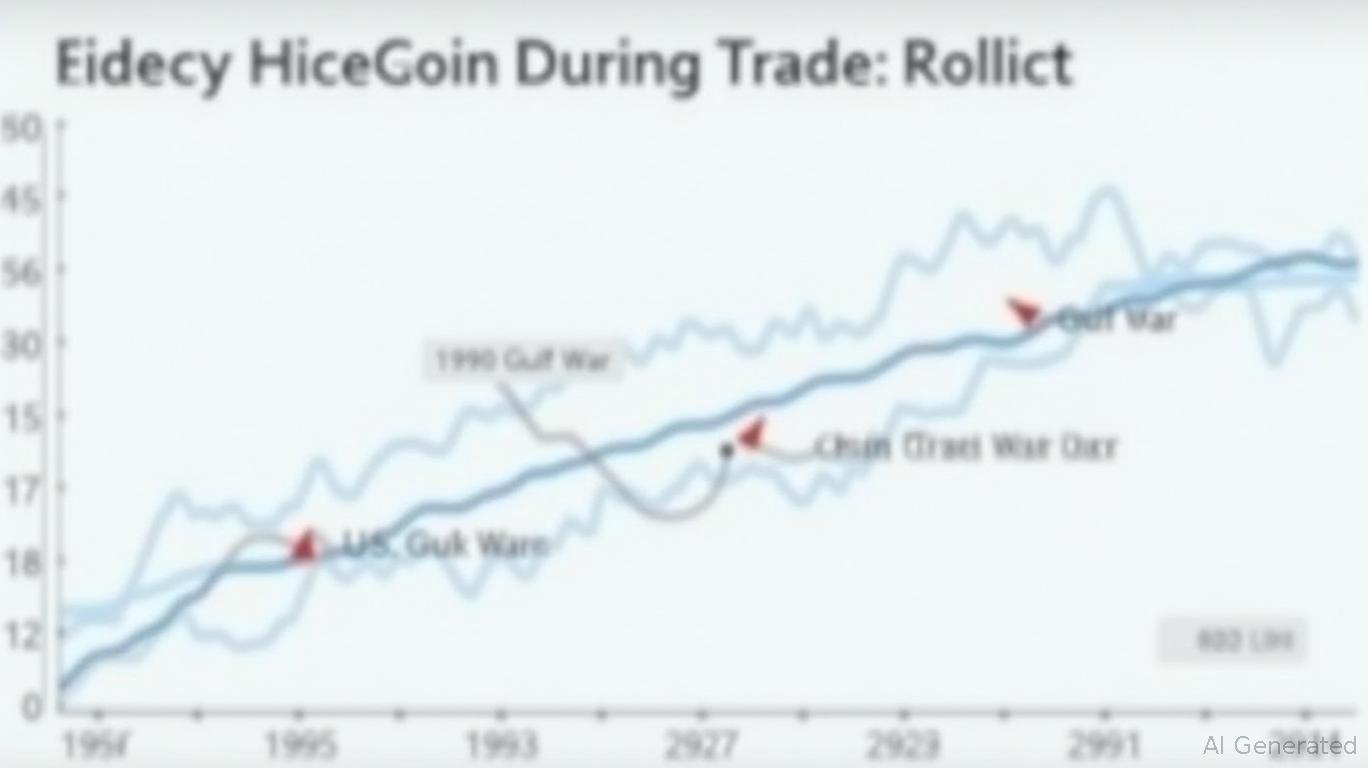The Fed's Data-Driven Pause: Navigating Volatility Amid Trade Uncertainty
The Federal Reserve's decision to hold interest rates steady at 4.25-4.5% in June 2025 underscores a pivotal moment for investors. With trade tensions between the U.S. and China reaching new heights—including tariffs as high as 145% on key goods—Chair Jerome Powell has emphasized the Fed's “wait-and-see” stance, citing tariff-related economic uncertainty as a critical wildcard. This pause, framed as data-dependent, mirrors historical moments when geopolitical and trade risks forced the Fed to balance inflationary pressures against growth threats. For equity investors, the path forward requires a strategic blend of defensive resilience and opportunistic exposure to sectors poised to rebound if the Fed eventually cuts rates.
Historical Context: When the Fed Paused to Wait
The Fed's current dilemma has echoes of past pauses tied to trade conflicts and broader economic shocks. During the U.S.-China trade war of 2019, the Fed executed three rate cuts—dubbed a “mid-cycle adjustment”—to offset the drag on growth and labor markets. Similarly, during the 1990 Gulf War recession, the Fed slashed rates by 525 basis points over two years, responding to oil-price spikes and global instability. Even the post-9/11 and 2008 crises saw aggressive Fed easing to stabilize financial systems.
What's different today? The interconnectedness of global supply chains amplifies tariff-related risks, while inflation remains stubbornly above the Fed's 2% target. Markets now price a 26% chance of a June 2025 rate cut, rising to near certainty by late 2025. Yet the Fed's caution—waiting for clearer unemployment data—reflects the dual-edged nature of tariffs: they can stoke inflation (via higher input costs) or slow growth (via reduced trade volumes).

Sector Strategy: The Barbell Approach
Investors should treat the Fed's pause as a signal to adopt a barbell strategy: allocating to defensive sectors that thrive in low-growth environments while positioning for cyclicals that benefit from eventual rate cuts.
Defensive Sectors: Utilities and Healthcare
Utilities and healthcare are classic havens in uncertain times. Utilities, with their stable cash flows and inverse correlation to interest rates, offer ballast. For instance, during the 2019 trade war, utilities outperformed the S&P 500 by 12% as investors rotated into low-volatility assets. Healthcare, too, benefits from demographic trends and regulatory resilience.
Cyclicals: Industrials and Tech, with a Wait-and-See Mentality
Industrials and tech—highly sensitive to trade flows and interest rates—will likely lag until the Fed signals a cut. However, these sectors could rebound sharply if trade tensions ease. Take the 2020 pandemic era: once the Fed slashed rates to near zero, industrials surged 40% in 12 months as demand for logistics and e-commerce infrastructure boomed. Similarly, tech stocks, which depend on capital expenditure and global supply chains, could rally if tariffs are rolled back.
Risks and Catalysts to Watch
- Trade Deal Progress: A breakthrough in U.S.-China negotiations, like the 2019 Phase One agreement, could trigger a rotation into cyclicals.
- Inflation Data: Core PCE inflation below 2% would embolden the Fed to cut rates, lifting equities broadly.
- Recession Odds: The 40% probability of a near-term recession cited by economists demands caution in overexposure to cyclicals.
Final Recommendation: Balance Prudence with Opportunity
Adopt a 60/40 split between defensive and cyclical holdings, with a focus on quality:
1. Defensive Core:
- Utilities: Pick dividend stalwarts like
- Healthcare: Invest in diversified giants like Johnson & Johnson (JNJ) or (AMGN).
- Cyclical Satellite:
- Industrials: Target supply-chain winners like (FDX) or (MMM), which benefit from trade normalization.
- Tech: Overweight in software and semiconductors (e.g., (MSFT), (NVDA)) if rate cuts materialize.
Avoid sectors like consumer discretionary and energy, which remain vulnerable to both high rates and trade volatility.
Conclusion
The Fed's pause is a call to navigate uncertainty with discipline. By anchoring portfolios in defensive sectors while reserving firepower for cyclicals, investors can weather near-term turbulence and capitalize on the policy shifts—rate cuts or trade deals—that will ultimately define this market's trajectory. As history shows, the Fed's eventual response to trade uncertainty will create asymmetric opportunities for those patient enough to wait.
John Gapper is a pseudonym for this analysis. The views expressed are based on publicly available data and do not constitute financial advice.

Comments
No comments yet